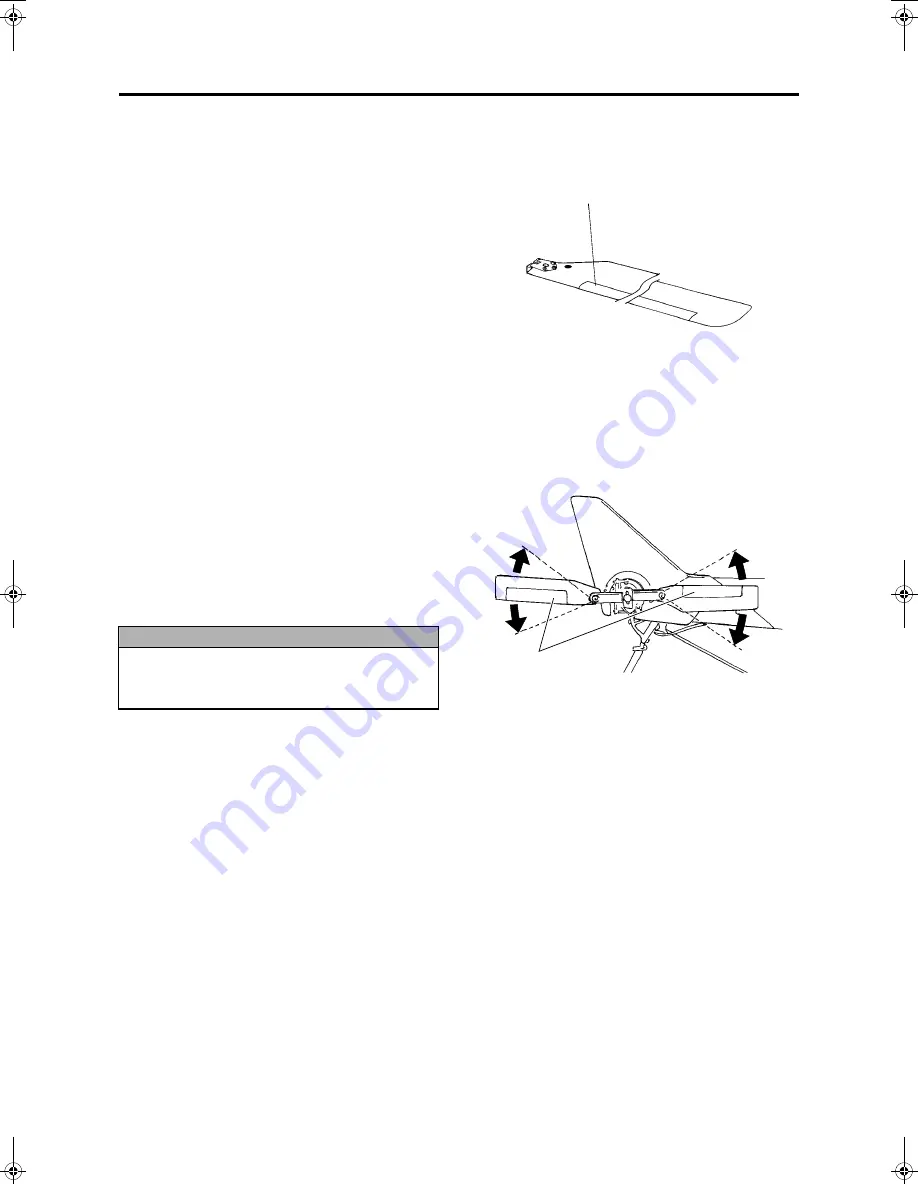
Pre-Flight Preparation and Inspection
4-22
Rotor Blade Inspection
Inspect the rotor blades for damage, dirtiness, and
movement.
Before performing this inspection, turn OFF both
the main switch for the helicopter and the power
switch for the transmitter.
1
Main Rotor Blades
●
Inspect the main rotor blades
’
surfaces for
dirtiness, fissures, cracks, or chips.
●
Inspect the cushion tape for peeling or dam-
age.
●
After the main rotor blades have been
installed, inspect them to make sure they
rotate smoothly in both directions. (See page
4-15.)
2
Tail Rotor Blades
●
Inspect the tail rotor blades
’
surfaces for dirti-
ness, fissures, cracks, or chips.
●
Inspect the cushion tape for peeling or dam-
age.
●
Inspect the tail rotor blades to make sure they
rotate smoothly in both directions.
If a rotor blade
’
s surface is dirty, use household
detergent on a soft cloth, wring the cloth, and use it
to wipe the rotor blade
’
s surface.
If the rotor blade is damaged, cancel the flight and
request a repair by your dealer.
Cushion Tape
If a main or tail rotor blade does not move
smoothly or is damaged, it could generate
noise or vibration.
NOTICE
Cushion Tape
RMAX.book Page 22 Tuesday, January 17, 2012 3:06 PM
Summary of Contents for RMAX Type II G Unit
Page 4: ......
Page 22: ...Part Names 2 5 ...
Page 40: ...Pre Flight Inspection Items 3 17 ...
















































